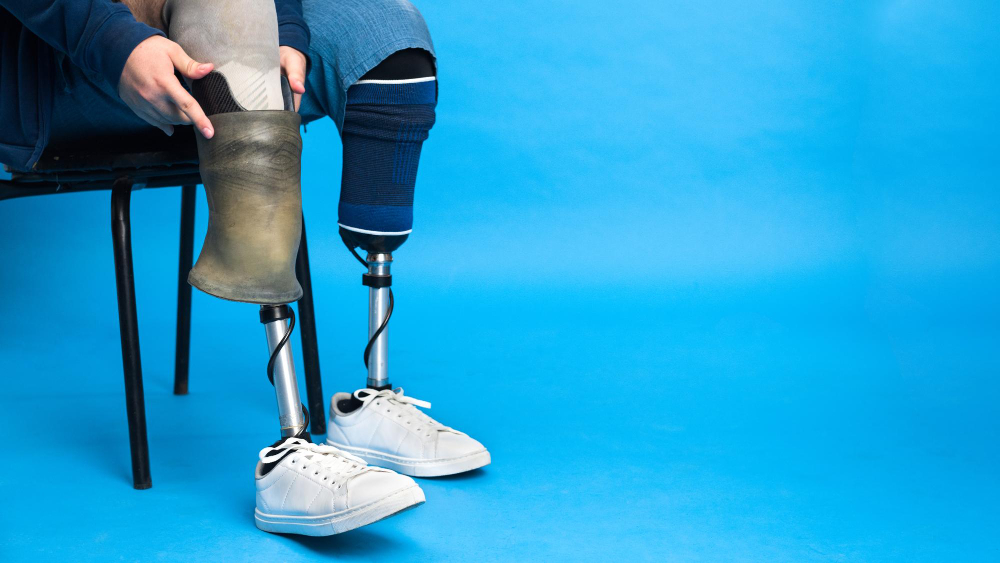Introduction
For many people using a prosthetic leg, stump socks, also known as prosthetic socks, are an everyday tool. They offer a quick way to respond to fit changes in the socket. Whether it is first thing in the morning or after a long walk, adding or removing a sock can seem like the simplest solution. While prosthetic socks absolutely have their place in prosthetic care, relying on them too heavily without reassessing the overall socket fit can gradually undermine your comfort, mobility, and long-term satisfaction.
Understanding Limb Volume Fluctuations
Your residual limb changes size throughout the day. Factors such as activity level, temperature, hydration, and time of day all influence limb volume. These natural shifts can cause your prosthetic socket to feel too loose or too tight at different times. For many users, the go-to fix is to add a prosthetic sock or two to take up extra space and restore a more stable fit. While this is a helpful and normal part of living with a prosthesis, it is important to understand what is really happening and whether socks are the best solution for you in the long term.
What Sock Ply Management Really Does
Adding socks in response to a changing fit is a form of manual volume control because you are manually adjusting to changes that have already occurred. This method can help in the moment, but it does not prevent those changes or respond to them as they happen. Sock management often involves trial and error, and it may take time to feel relief. Over time, excessive sock ply can reduce contact between the limb and the socket, which causes uneven pressure and affects suspension. A loose or inconsistent fit can make walking more difficult and may increase the risk of skin issues. While prosthetic socks are a useful tool, they are not a substitute for a socket that adapts to your body throughout the day.
How Sock Dependence Can Affect Mobility
Using too many socks can slowly impact how you move. When your residual limb is padded with multiple sock layers, you may lose some of the connection and feedback that helps guide your movements. This sensory feedback is known as proprioception. The alignment between your limb and your prosthetic leg socket can shift, which may lead to compensations in other parts of your body. Over time, this can affect your posture, walking pattern, and overall comfort. To be clear, using prosthetic socks over many years is not harmful if done properly. But using too many layers regularly without checking the fit of your socket can limit your mobility and lead to long-term discomfort.
When Sock Use Makes Sense—and When It Doesn’t
There are many valid situations where prosthetic socks are the right choice. If you are newly amputated, recovering from surgery, or adjusting to a new socket, using socks to manage volume changes is expected. Temporary shifts in limb size, such as after exercise or travel, are also good times to use them. However, it may be time to reassess if you are consistently using more than five to ten sock ply, feeling unstable in the middle of the day, experiencing frequent skin irritation, or needing to adjust your fit multiple times each day. These signs suggest that your current system may no longer be working well for you.
The Shift Toward Automatic Volume Management
New prosthetic technologies are creating new ways to manage limb volume. Adjustable sockets and automated systems can respond to changes in real time. These tools help maintain a closer and more consistent fit, improving comfort and reducing the need for daily sock adjustments. They also support better suspension and allow your prosthetic leg to move with your body instead of requiring constant manual changes. This kind of responsive system can make a meaningful difference in day-to-day comfort and mobility.
Conclusion
Prosthetic socks are a helpful and important part of prosthetic care, but they also come with limitations. Passive volume control should not be the only strategy used to manage socket fit, especially if you find yourself making frequent adjustments or relying on high sock ply. If you depend on socks to stay comfortable, it may be time to talk to your prosthetist about more adaptive solutions. With the right tools and support, you can achieve better stability, reduced discomfort, and a more consistent experience in your prosthetic leg.


.svg)


.png)
.png)
.png)